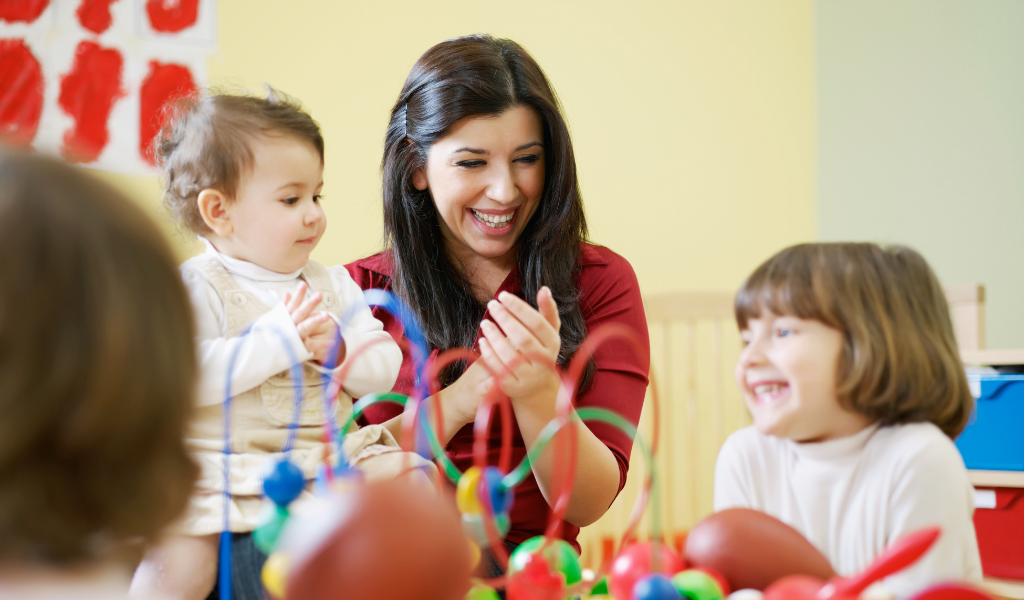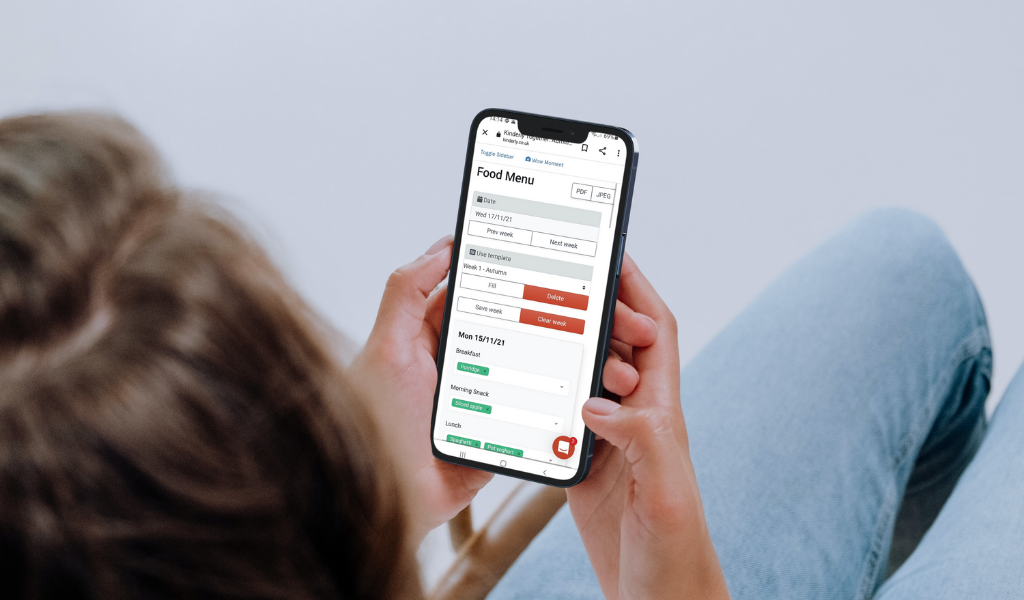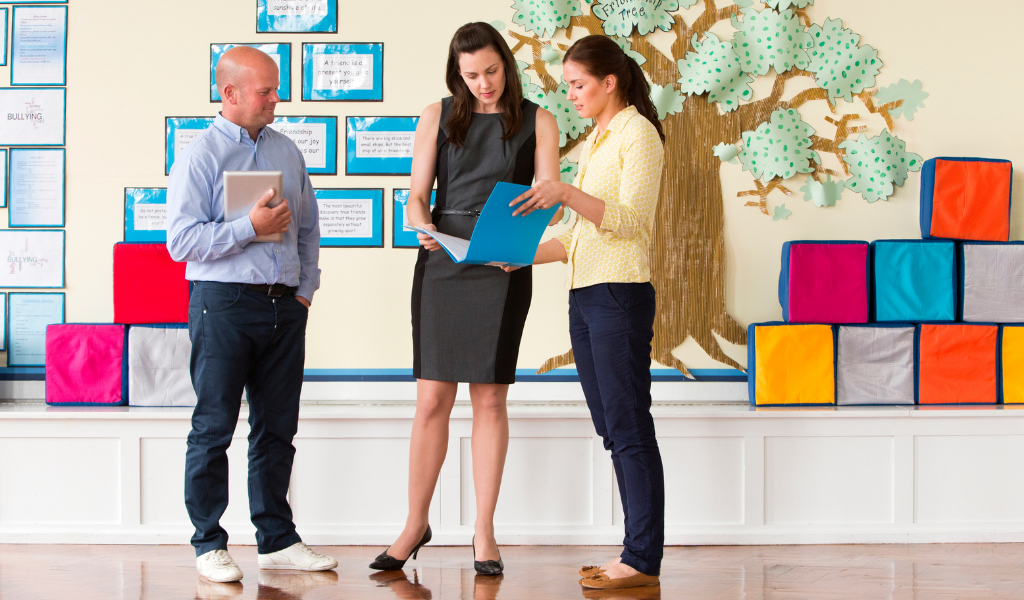In this informative article, Rebecca Martland outlines and summarises the recent changes to the EYFS 2024 and what you need to know.
In 2021 there was a major update to the Statutory Framework for the Early Years Foundation Stage, more commonly known as the EYFS, focusing primarily on Section 1 , the Learning and Development Requirements.
During the summer of 2023 the DfE consulted on further changes, this time looking at Section 3, the Safeguarding and Welfare Requirements. A number of controversial proposals were made, including changes to the percentage of Level 2 qualified staff and qualified staff ratios during certain times of the day. Neither of these suggestions were adopted, but others were, with some being added from September 2023 and more when the revised EYFS came into force on 4th January 2024.
Following child deaths from choking in childcare settings the supervision requirements for when children are eating have been strengthened. It is now a requirement (EYFS 3.29) that children must be seen as well as heard when eating. In light of this, settings (including childminders) should ensure:
The adult to child ratios for two-year-old were changed from 1:4 to 1:5 (3.33). This caused significant concern amongst providers, with a general view that this will lead to a reduction in the quality of care and safety that can be provided. It is an optional increase however, so settings may continue to maintain a 1:4 ratio, with the flexibility to change to 1:5, to cover staff sickness for example.
This paragraph caused more confusion than clarification when issued, with many childminders being led to believe that they could no longer make exceptions to the ratios except in very limited circumstances. In actual fact, only 2 words were changed: baby/ies to child/ren and sibling babies to babies, to make it clear that the examples provided apply to all children, not just babies.
If a childminder can demonstrate to parents and/or carers and Ofsted inspectors or their childminder agency (CMA) that the individual needs of all the children are being met, exceptions to the usual ratios can be made, for example: when caring for siblings, (previously ‘sibling babies’) or their own child (previously ‘baby’)… ( 3.43)
It is important to note that the examples of when an exception might be made, given in the list in 3.43, are just that. It is up to individual childminders considering making an exception to decide if they can safely and effectively care for more than the usual ratios (3 under 5), whilst continuing to always meet all the children’s needs. If Ofsted/CMA believe that this is not happening for one or more children, they will determine that the childminder is over ratio because they are not meeting the required criteria for making an exception.

Neither document is a watered-down version of the EYFS. The only differences are where there are specific requirements that do not apply to that type of provision e.g. ratio and qualification requirements.
In both versions the language has been made plainer and clearer, with some sections moved or reformatted, with clearer headings.
*EYFS reference numbers: C = childminder, GS = group & school-based provision
Curriculum
There have been some tweaks in the language describing the Educational Programmes to make it clear that these are high level curriculum summaries (1.6) setting out what should be included as part of a setting’s curriculum, and that settings should be ambitious for all children (1.7 C, 1.12 GS).
English as an Additional Language
It is no longer a requirement for settings to provide opportunities for children to develop and use their home language in play and learning (1.9 GS, 1.14 C). This has been changed from ‘must’ to ‘may’, giving settings the flexibility to determine how best to support each child’s communication and language development when English is not their home language.
A change to wording in this section strengthens the DfE’s and Ofsted’s stance that settings must not complete unnecessary paperwork. This now clearly states the practitioners are not required to prove a child’s level of development through collection of any physical evidence, rather than the previous ‘should not’ (2.2).
Obviously, there are still situations where collecting written evidence may be helpful, such as where there are concerns about a child’s development or to support a referral, but otherwise, the only required documentation for most Early Years settings/childminders is the 2-year progress check. A useful link to the revised guidance on completing the 2-year progress check has been added to support settings with this.
Digital technology
In recognition of the rapid advances in digital technology, inclusion of the use of mobile phones and cameras in safeguarding policies has been extended to include other electronic devices with imaging and sharing capabilities, (3.6 GS, 3.7 C). This does not mean a blanket ban on smart watches etc. is now required, but, in light of this change, settings (including childminders) should consider how technology is used safely in the setting by staff, children and parents, including tablets, iPads, smart wear/watches, laptops, cameras and mobile phones etc., e.g. device passwords, supervised use, smart wear set on airplane mode etc. and update their safeguarding policies accordingly.
A link to guidance on online safety has also been included ‘‘Safeguarding children and protecting professionals in early years settings: online safety considerations’.

Supporting and Understanding Children’s Behaviour
This change from ‘managing behaviour’ to ‘supporting and understanding’ is small but significant, demonstrating a welcome shift in attitudes, with adults recognising that behaviour should to be understood and responded to in the context of the child’s development and experiences (3.58 GS, 3.57 C).
Information for parents and carers
This now states providers/childminders must share the information with parents and/or carers, rather than simply ‘make available’. Sharing implies a more proactive approach towards making sure parents receive information. This includes how the EYFS is being delivered. Settings should therefore ensure parents are made aware of the EYFS changes and the impacts of these. Settings must also share ‘how staffing in the setting is organised’ rather than just ‘making available information about staffing’ which is much more explicit (3.81 C, 3.82 GS).
Suitable People
When assessing suitability of staff, providers must ensure that they have the relevant qualifications, training and have passed any required checks to fulfil their roles. Providers must take appropriate steps to verify qualifications, including in cases where physical evidence cannot be produced (3.9), so, if a practitioner does not have a physical copy of their certificate the provider can now accept a digital version for example, or contact the training provider.
Qualifications and ratios
Paediatric First Aid
The DfE summary of changes has led to some confusion around the requirements for paediatric first aid (PFA), suggesting that all staff now need a PFA in order to count in ratios. In fact, there has been no change to the existing requirements: staff who obtained a level 2 and/or level 3 qualification since 30 June 2016 must obtain a PFA qualification within three months of starting work in order to be included in the required qualified ratios. Staff qualifying before this do not need a PFA qualification, nor do unqualified staff, to count in ratio, although it is a good idea to have as many PFA qualified staff as possible (3.31)
The only actual change is a clarification that the PFA qualification must be in date and renewed every three years (3.31). Certificates (or staff list), should be displayed, or made available to parents (3.32)
Maths
One area of significant change to the qualification requirements for staff ratios is that of holding a level 2 maths qualification.
Managers appointed on or after 1 January 2024 must have already achieved a suitable level 2 qualification in maths or must do so within two years of starting in the position. Managers are responsible for ensuring staff have the right level of maths knowledge to effectively deliver the EYFS curriculum (3.37)
This means that any manager who currently does not have a level 2 maths qualification who then moves to a new management position must achieve this within 2 years of the move. Level 3 practitioners (holding an an approved, full and relevant L3) are no longer required to hold a level 2 maths qualification to count in the qualified staff ratio at level 3. This applies to all level 3 staff, irrespective of when they qualified.
Staff holding an Early Years Educator qualification (i.e. began their qualification after September 2014) must still have a suitable Level 2 English qualification to count in the qualified ratio at level 3, (3.38)
Level 3 apprentices are still required to pass both maths and English at Level 2 as a condition of completing their apprenticeship. Currently it is possible to achieve the Level 3 EYE diploma without taking or passing the final assessment (EPA), but this has implications for the training provider and may affect the practitioner’s ability to obtain future funding. However, for those starting their apprenticeships from April 2024, this will not be possible, and they must have both maths and English at L3 to qualify.

Students
Students on long term placements and volunteers (aged 17 or over) and staff working as apprentices in early education (aged 16 or over) may be included in the (qualified) ratios at the level below their level of study, if the provider is satisfied that they are competent and responsible (3.49).
To assess competence, providers could use the criteria in Annexes C, D & E from the DfE Early years qualification requirements and standards to support them.
This change means that someone studying towards an approved level 3 qualification (including qualifications at levels 4, 5 and 6) may count within the level 2 ratio, and someone studying towards EYTS or QTS may count within the level 3 ratio.
For reference, not all level 6 degrees give a licence to practice. They must have been assessed in practice and be on the Early Years Qualifications List (EYQL), in which case they will count as level 3 for ratio purposes. To count as level 6 for ratio purposes someone must have EYTS, EYPS or QTS.
The Early Leaning Goals (ELGs) have been moved to Annex C and the EYFS Profile Assessment to Annex B. This is because these are only needed for a child who has not yet started school by the final term of the year in which they reach age 5, so do not apply to most childminders. This also reinforces that the ELGs are an end point assessment so should not be used as a curriculum.
The Reception Baseline Assessment (RBA) has been removed completely, as this is only ever conducted by teachers in school.
Child protection
This section has been reworded and updated to clarify the safeguarding responsibilities of individual childminders, when working together with other adults, including other childminders
Childminders working alone or with assistants must take lead responsibility for safeguarding children in their setting. Childminders must know how to contact the local statutory children’s services, and the LSP (local safeguarding partners). All practitioners must be alert to any issues of concern in the child’s life at home or elsewhere (3.4).
In the case of childminders working together, each childminder is responsible for meeting the requirements of their own registration. Childminders must know that they have a shared responsibility when working together for the wellbeing of all the children present. Therefore, where childminders work together, each childminder also has a responsibility to refer any concerns where another childminder does not continually meet the requirements of their registration (3.5).
Suitable person
Updated wording (3.10/3.11) clarifies that it is Ofsted/CMA who are responsible for carrying out suitability checks on the childminder, their assistants and any other person aged 16 or over who is living or working on the premises where childminding is being provided.
This does not remove the need for safer recruitment practices, however or the requirement for appropriate training, including safeguarding.
Training, support, and skills
The requirement for childminders to have undertaken training to enable them to understand and deliver the EYFS has been removed, so that those who already have a good grounding in the EYFS, such as former nursery practitioners, can use their existing knowledge, rather than attend unnecessary training.
It is still expected, however, that anyone registering has the appropriate skills, knowledge, and a clear understanding of their role and responsibilities in order to provide good quality early years provision (3.24, amended 09.01.24) and they must demonstrate that they have knowledge and understanding of the EYFS, including how to implement it, as part of their registration with Ofsted or a CMA (3.26).
So, whilst training is no longer a requirement for all, it will still be necessary for any prospective childminders who do not have previous experience and/or knowledge of the EYFS. Childminder specific training is also useful for providing support on those wider elements of the role, such as business and tax, policies, contracts and marketing the service.
A revised section on assistants makes it clear that childminders are accountable for the quality of any assistants work, their competence in the role, and their responsibility for ensuring that assistants receive adequate training with regular, effective supervision.
Key person
Previously the EYFS stated the childminder was the key person. Childminders may now assign key children to their assistants where appropriate (3.38).
Indoor space requirements
This section has been updated to say that when working out their available indoor space childminders may now include their kitchens, which were previously excluded, whilst considering what areas within their kitchens are safely usable. (3.66)
Organising premises
3.71 Childminders are no longer required to ensure a confidential area to talk to parents is available at all times. Instead, they must ensure that on request, they can make available an area where they may talk to parents and/or carers confidentially. (3.71)
Information
Childminders are no longer required to physically display their certificates of registration, instead these may be displayed digitally, for example on a childminder’s website, but must be made available to parents on request (3.85).
This also applies to first aid certificates (3.36)
Useful links